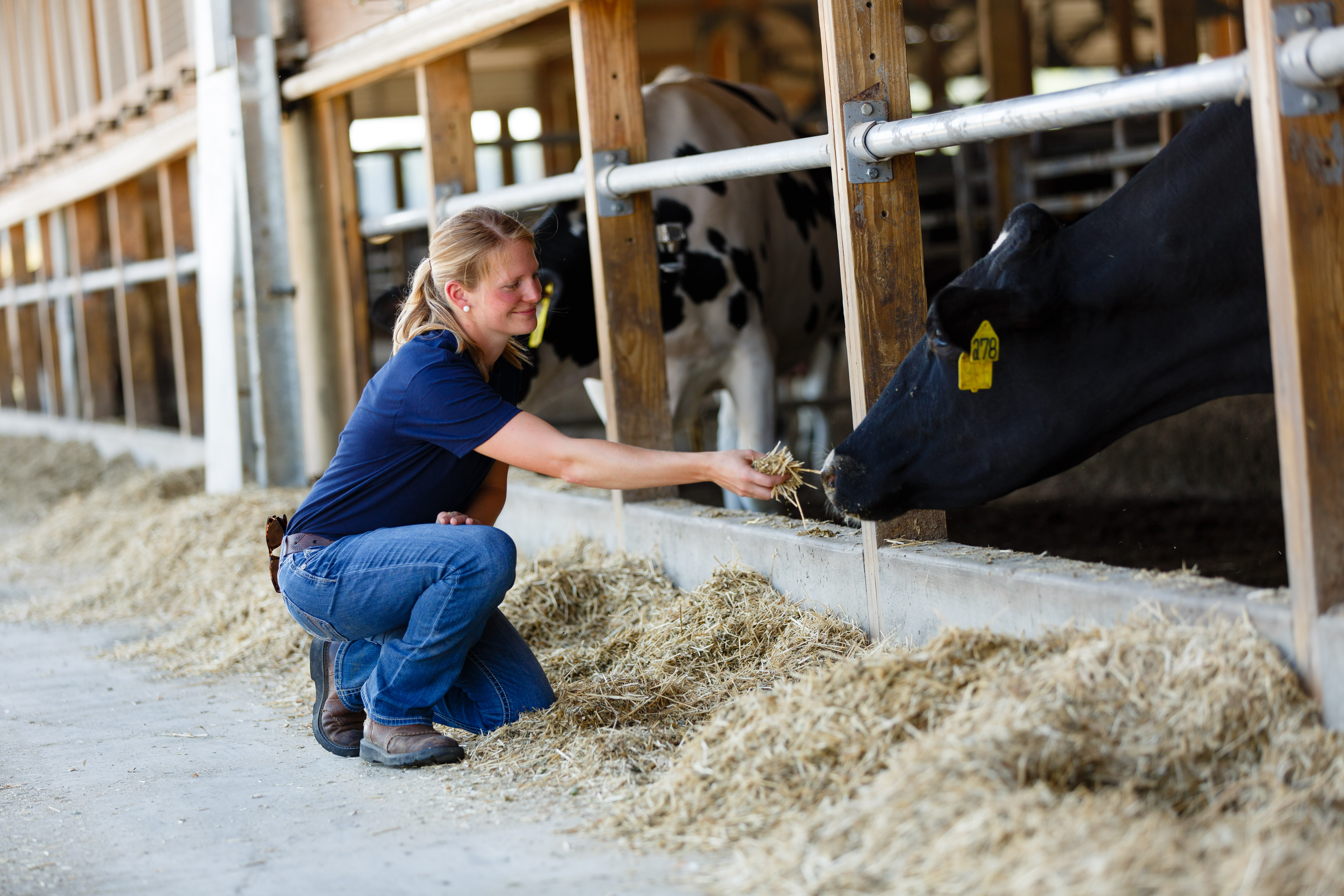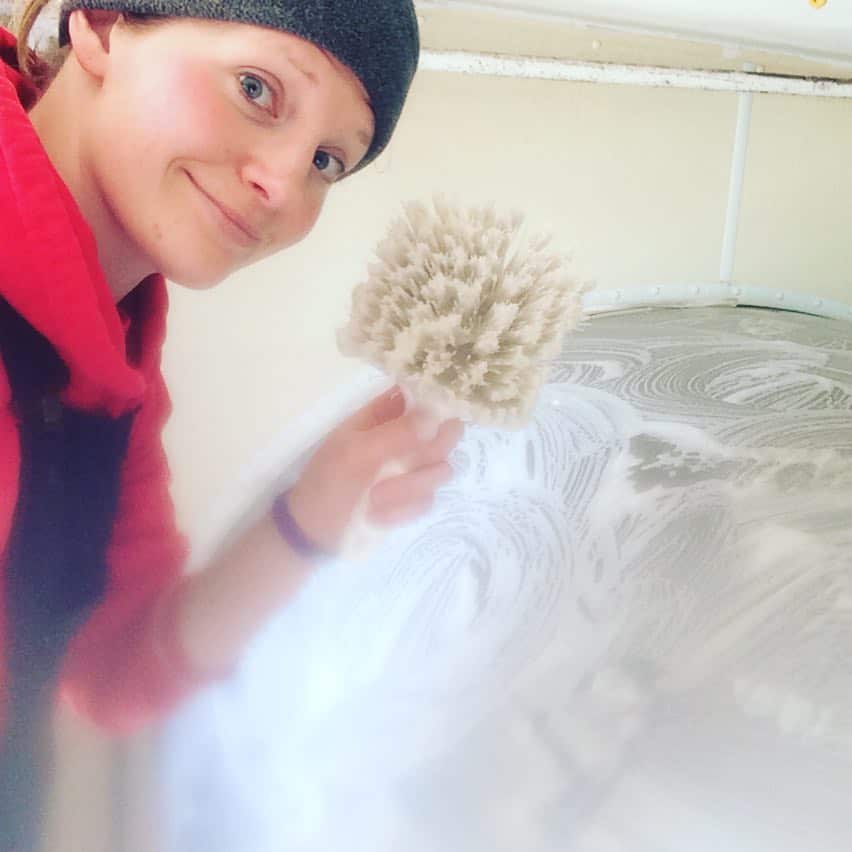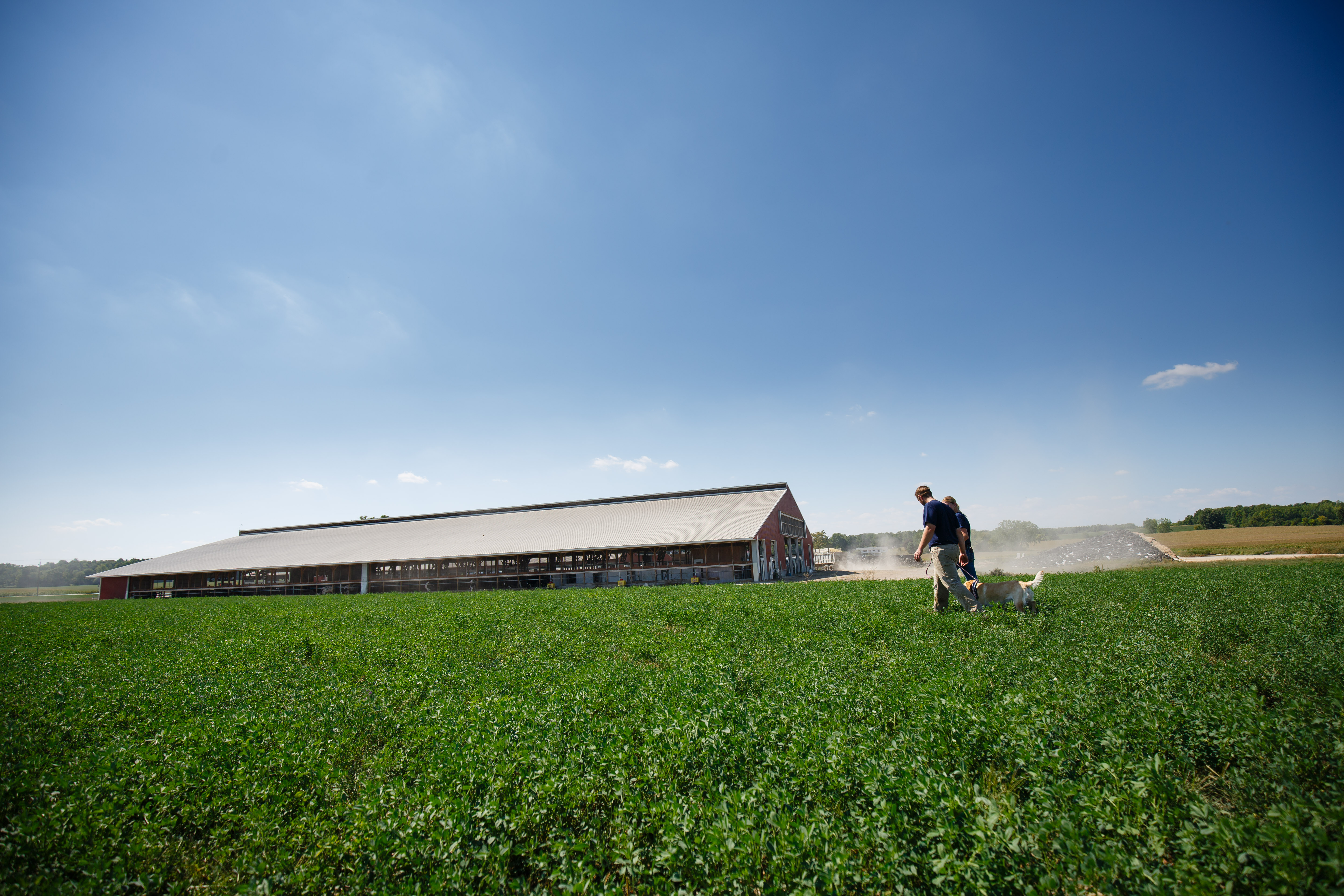Winter wonderland brings about many changes. The one constant is the care that farmers give their cows. Even heading into the shortest, coldest, and darkest days of the season. Farmers make sure cows are healthy each winter, and throughout the year.
One thing to know… cows THRIVE in cold air. Most farmers keep their barns between 50-55 degrees Fahrenheit in the winter. Reality check – we know there will be days that the temperature dips well below freezing! It’s when you talk below 20 degrees Fahrenheit that cows start feeling it.
Here are the top 6 things dairy farmer Abbey Copenhaver, from Ivy Lakes Dairy in Stanley, New York, says most farmers do in preparation for winter on the farm.

1. Maintaining the Farm
Curtain Call!
“Our newest barn has automatic curtains so that the cows don’t miss a beat and they stay super comfortable.”
Adjustable curtains… in a barn? Yep! They’re automatic and set to a thermostat which senses the temperature change and rolls out the curtains accordingly. Curtains in the older barns on must be cranked out manually. Either way, curtains make sure cows stay comfortable even in inclement weather.
Protecting Farm Equipment… whatever it takes!
“Some of the times we have to put straw around some of our equipment to keep freezing over during the night.”
Even tractors get to come inside the barn from the bitter cold, so they can be plugged in to keep the diesel equipment from freezing. And everything is greased so that it doesn’t freeze up!
2. Keeping Calves Cozy
“We try to make sure that we put in straw within the maternity area during the colder months so that the newborns will have some nice insulated bedding versus just the [normal] saw dust.”
Calves are a lot more sensitive to temperature change than the adult cows, says Abbey. That’s why they keep the calf barn heated and give calves lots of straw for bedding and even blankets. Sometimes farmers even make calf ear muffs!

3. Energizing Cows with Diet
“We’ll work with a nutritionist to make sure that the cows’ energy needs are being met. The feed will be adjusted as the weather kind of goes up and down throughout the winter.”
As winter approaches, farmers make sure their crops are harvested and stored for use in the winter months. It’s also the time of year that cows’ energy needs increase because they are burning more energy to stay warm. Farmers work with their nutritionist to change the cows’ diet to meet these energy needs via crops they’ve harvested.

4. MOOving Things Around at the Milking Parlor
“We need to keep our milking equipment from freezing up when the ladies come to be milked.”
Cows love routine. They want to be milked on time. To keep milk equipment from freezing, the cooling fans that kept cows comfortably cool in the summer, are put away. The doors, taken off to keep the barn well-ventilated during the hotter months, are put back on.

5. Field of {Future} Dreams
“Planting a cover crop prevents land erosion. It also puts nutrients back in the ground so that the fields are ready go the following spring.”
Ah, spring! Seems like a distant dream, doesn’t it? Snap! Back to winter… after harvest, many farmers fertilize their fields with cow manure, an excellent source of nitrogen, phosphorus and potassium – it’s the ultimate in recycling! Additionally, some farmers plant winter-hardy cover crops, such as rye, wheat or triticale, a hybrid of rye and wheat. These crops help protect and improve soil health.
6. No Water Woes!
“We have water tubs outside of the milking parlor for our cows, so we make sure to put heat coils around them to keep them from freezing.”
Many farmers use heated or insulated water tubs in the winter so that their cows always have fresh water to drink. After all, cows drink about 40 gallons of water a day! In the free stall barns, where adult cows are kept, Abbey says, the cows are in there drinking frequently enough so usually the water doesn’t have a chance to freeze.
In the calf barn, the area is heated, so if the calves want water in between feedings of milk, it’s there for them.

While you’re enjoying winter wonderland, so are the cows and calves! Making sure their cows are comfortable, in winter months and throughout all seasons, clearly, is a labor of love for dairy farmers. Don’t wait until spring to get out on a farm… meet more local dairy farm families today!




